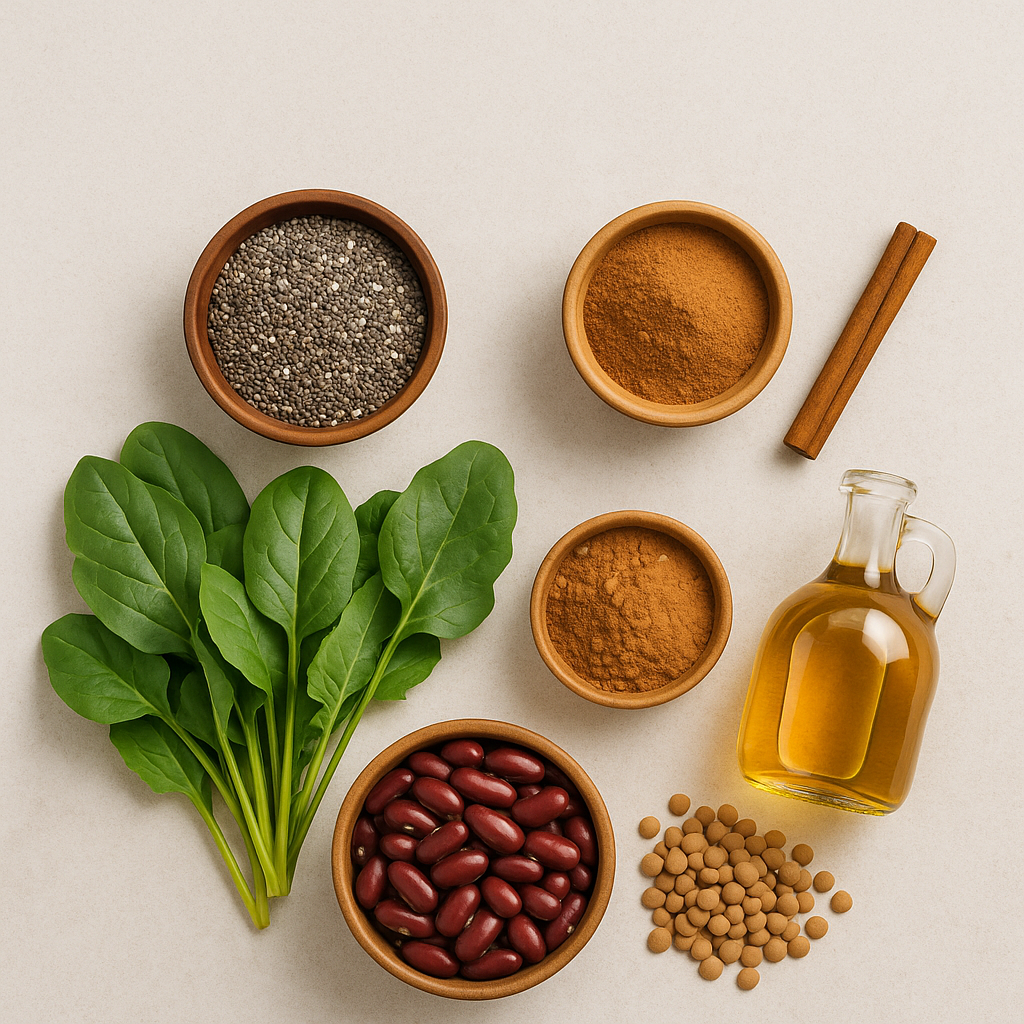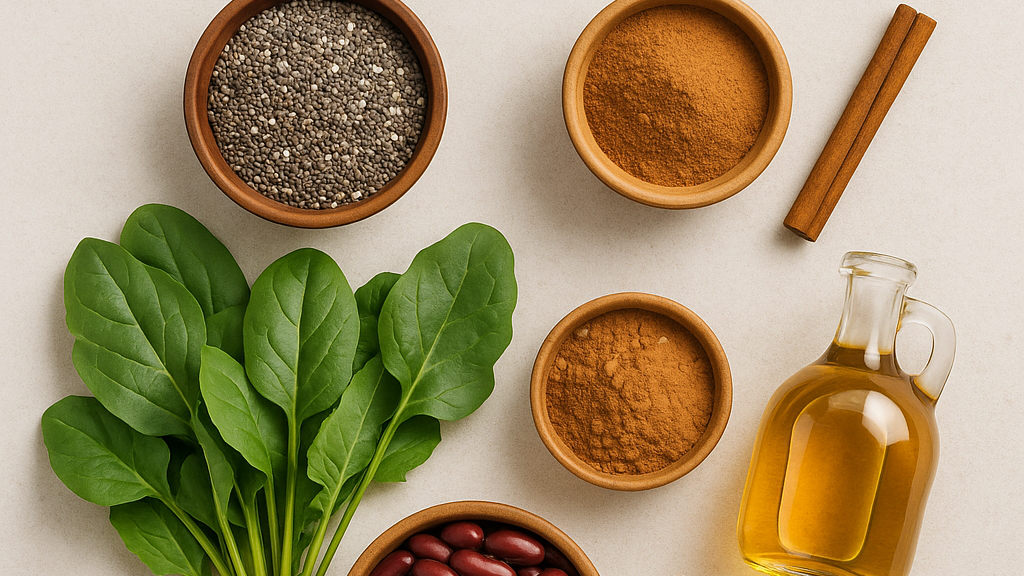Type 2 diabetes is a growing global health issue, impacting millions annually. While medication and exercise are crucial for management, diet often goes underappreciated. Eating the right foods isn’t just about cutting back—it can support the body in restoring blood sugar balance and may even help reverse the condition over time.

1- Cinnamon: More Than Just a Sweet Spice
Cinnamon is more than a flavor enhancer for baked goods and lattes—it may also help your body manage blood sugar levels more effectively. Research suggests that cinnamon may improve insulin sensitivity and help reduce the spike in blood sugar that occurs after meals. One of its other notable effects is slowing the breakdown of carbohydrates during digestion. This means glucose enters your bloodstream more gradually, helping you avoid energy crashes and sudden spikes. Easy ways to include cinnamon in your diet:
- Stir into your morning oatmeal, yogurt, or smoothie
- Mix with coffee, herbal teas, or warm milk
- Sprinkle over roasted sweet potatoes, baked apples, or whole grain toast
Even a small daily amount—around 1/2 to 1 teaspoon—can be beneficial. However, always opt for Ceylon cinnamon over cassia when possible, as it’s lower in coumarin, a compound that can be harmful in large doses.
2- Leafy Greens: Fiber-Filled and Low-Glycemic
Leafy greens like spinach, kale, Swiss chard, and collard greens are superstars for blood sugar regulation. They’re low in carbohydrates yet rich in fiber, magnesium, and powerful antioxidants. These nutrients not only support healthy insulin function but also help calm inflammation and oxidative stress—two underlying factors in blood sugar imbalance. Why leafy greens are beneficial:
- Fiber helps slow the digestion of sugars
- Magnesium supports insulin response
- Antioxidants reduce cellular damage linked to insulin resistance
Simple ways to enjoy them:
- Add to soups, stews, or stir-fries
- Toss into smoothies or scrambled eggs
- Bake into crispy chips or add raw to hearty salads
3- Chia Seeds: Tiny Seeds with a Big Impact
Chia seeds may be small, but they pack a serious nutritional punch when it comes to blood sugar balance. These little seeds absorb liquid and expand into a gel-like consistency, which helps slow digestion and promotes a steadier release of glucose into the bloodstream. Chia seeds are high in soluble fiber and plant-based omega-3 fats, both of which support stable energy and insulin sensitivity. Nutritional highlights of chia seeds:
- Rich in soluble fiber that helps moderate blood glucose
- Contain alpha-linolenic acid (ALA), a plant-based omega-3
- Provide plant protein, calcium, and other key minerals
Ways to use chia seeds:
- Make a simple chia pudding with non-dairy milk and fruit
- Stir into protein shakes, oatmeal, or yogurt
- Sprinkle on salads, toast, or overnight oats
4- Apple Cider Vinegar: A Sour Sip with Sweet Benefits
Apple cider vinegar (ACV) has gained popularity for various health reasons, but one of its most evidence-backed benefits is blood sugar control. Studies show that taking apple cider vinegar before meals—especially those high in carbohydrates—can help lower post-meal blood glucose and improve insulin sensitivity. It also slows down stomach emptying, meaning sugars are absorbed more gradually. How to consume ACV effectively:
- Mix 1 tablespoon into a full glass of water and drink before meals
- Add it to homemade vinaigrettes, marinades, or pickled veggies
- Always dilute it—undiluted ACV can damage tooth enamel and irritate your stomach
5- Beans and Lentils: Slow-Digesting Plant Power
Legumes like black beans, kidney beans, lentils, and chickpeas are excellent plant-based foods for blood sugar support. They are rich in soluble fiber and protein—two nutrients that help slow the release of sugar into the bloodstream while also promoting fullness and satiety. Their low glycemic index means they digest slowly, helping avoid energy highs and lows. Why legumes are helpful:
- Contain resistant starch that supports gut health
- Improve insulin response and help manage cravings
- Affordable, shelf-stable, and versatile in recipes
Ideas for incorporating beans and lentils:
- Add to salads, burrito bowls, soups, or stews
- Make spreads like hummus or bean dip
- Blend into patties or serve with whole grains like quinoa or barley
Final Thoughts:
Taking control of your blood sugar doesn’t always require drastic measures—it often starts with simple, intentional food choices. These five natural, nutrient-rich foods—cinnamon, leafy greens, chia seeds, apple cider vinegar, and legumes—can be woven into everyday meals to support better glucose regulation, more consistent energy levels, and overall metabolic wellness.
